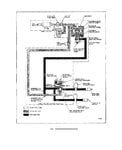kool kitty89
Senior Master Sergeant
Where did i say the Meteor Mk.I was even close to the Me 262?
Well the Mk. I certainly had problems, but it did have one advantage over prop fighters, the top speed of ~410-420 mph was achieved at low level and thus gave it a good advantage there. (it would have been very successful against the V-1's if not for the jamming guns caused by flawed case ejection chutes) Granted the Me 262 in any operational for was greatly superior to the Mk I.
But remember the improvements in the Meteor III, the long chord nacelles (introduced after initial production, but also retrofitted) greatly improved compressibility problems and added ~75 mph to top speed even with the Welland (1,700 lbf) engines giving a top speed of ~495 mph, increased to ~520 mph with Derwent Mk. I engines. (and there were also Derwent II -2,200 lbf, and IV -2,450 lbf- but I don't know if they were used operationally)
Granted the Meteor III had the ailerons wired heavy to limit wing stresses and allow it to be cleared for aerobatics, resulting in a rather poor roll-rate.
The Meteor III was coming closer to the Me 262's performance, but still at a significant disadvantage in performance (except in a turn). And even in the F-4 meteor, the compressibility problems were significant, with bad snaking around .8 Mach and buffeting, exceeding the limiting Mach number (limited by the tail on these models) could result in violent shock-stalls sometimes with irrecoverable loss of control or structural failures. These were eventually addressed with a new tail on the F-8, allowing full control up to critical Mach with better characteristics when hitting crit Mach and a limit of ~.82 Mach.
The improvements to the Meteor came rater late in the war, but had there not been the problems from the horrible Rover arrangement the Meteor's development could have been nearly 2 years further along, and engine developments more so.
With either W.2/700 or Derwent IV engines (2,450 lbf) an improved Meteor should have been available much sooner, with improved airframe allowing full combat ability.(clipped and strengthened wings)
Not quite as the F-4 (with 2x 3,500 lbf engines) and still with Mach limitations of the tail, but probably somewhat lighter as well.
Well the Mk. I certainly had problems, but it did have one advantage over prop fighters, the top speed of ~410-420 mph was achieved at low level and thus gave it a good advantage there. (it would have been very successful against the V-1's if not for the jamming guns caused by flawed case ejection chutes) Granted the Me 262 in any operational for was greatly superior to the Mk I.
But remember the improvements in the Meteor III, the long chord nacelles (introduced after initial production, but also retrofitted) greatly improved compressibility problems and added ~75 mph to top speed even with the Welland (1,700 lbf) engines giving a top speed of ~495 mph, increased to ~520 mph with Derwent Mk. I engines. (and there were also Derwent II -2,200 lbf, and IV -2,450 lbf- but I don't know if they were used operationally)
Granted the Meteor III had the ailerons wired heavy to limit wing stresses and allow it to be cleared for aerobatics, resulting in a rather poor roll-rate.
The Meteor III was coming closer to the Me 262's performance, but still at a significant disadvantage in performance (except in a turn). And even in the F-4 meteor, the compressibility problems were significant, with bad snaking around .8 Mach and buffeting, exceeding the limiting Mach number (limited by the tail on these models) could result in violent shock-stalls sometimes with irrecoverable loss of control or structural failures. These were eventually addressed with a new tail on the F-8, allowing full control up to critical Mach with better characteristics when hitting crit Mach and a limit of ~.82 Mach.
The improvements to the Meteor came rater late in the war, but had there not been the problems from the horrible Rover arrangement the Meteor's development could have been nearly 2 years further along, and engine developments more so.
With either W.2/700 or Derwent IV engines (2,450 lbf) an improved Meteor should have been available much sooner, with improved airframe allowing full combat ability.(clipped and strengthened wings)
Not quite as the F-4 (with 2x 3,500 lbf engines) and still with Mach limitations of the tail, but probably somewhat lighter as well.

